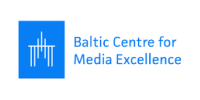Higher Education Course: Week 1
Week 1 topic: Introduction, overview of the course, mapping the expectations, and agreeing upon common rules.
Independent task about different types of information
Today’s information environment is hard to manage. We have all been down the algorithmic rabbit holes of our social media networks. Some of the information we see in our feed is fact-based, some of it opinion-based. Information disorder is essentially a more inclusive term when denoting the phenomena that used to be referred to as fake news. The term was widely popularised in 2016 during and after the United States presidential election and the UK Brexit referendum, as well as the French presidential elections in 2017, but has since been appropriated by politicians when referring to news organizations they find disagreeable (Wardle and Derakhshan, 2017); for this reason, is preferred instead.
Recognizing information disorders – whether as a multiplier of misinformation or as a well-intentioned receiver of it – will be something that you shall hopefully be comfortable with by the end of this class. Spoiler: besides being able to identify stereotypes and biases (last week’s theme!) and being aware of the current media landscape as well as the role of social media in our lives, being able to distinguish fact from opinion is a skill that will come in extremely handy.
Look at the table below (the greenish-bluish picture file attached) that helps distinguish information from persuasion. Your task? Give examples (6 examples all up) on each of the content types. Please use different examples and feel free to dig through foreign media too. You might find examples that fit in several brackets – cool! Just make sure you bring out arguments about why you think so and have 6 examples all up.

Click here to find IREX’s “Learn to Discern” thorough teachers’ manual as additional material.





